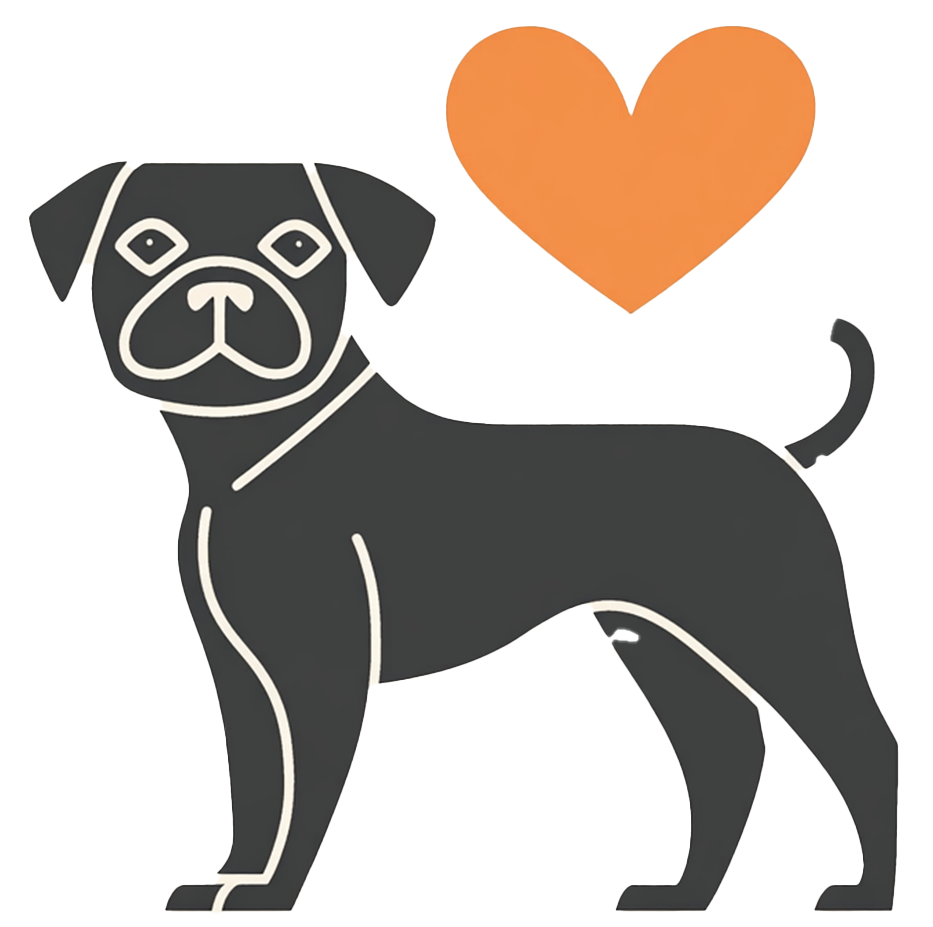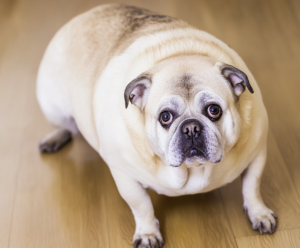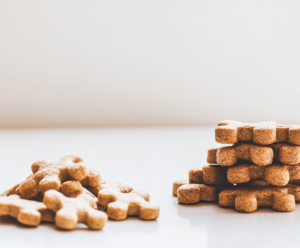The Growing Issue of Dog Obesity
In recent years, dog obesity has become a significant concern for pet owners and veterinarians alike. With more than 50% of dogs in the US classified as overweight or obese, the problem is no longer limited to just a few cases. Obesity in dogs can lead to a host of health issues, from joint problems to decreased life expectancy, and treats are often a major contributor to this issue.
As a dog owner myself, I’ve seen how easy it is to fall into the habit of giving too many treats. My younger dog, Lando, is full of energy and always eager for a snack after playtime. Nico, my older and calmer dog, also enjoys a reward now and then. However, I’ve had to learn the hard way that while treats make my dogs happy in the short term, overindulgence can lead to long-term problems.
Veterinarians often point out that dog treats should make up no more than 10% of a dog’s daily calorie intake. Yet, many of us unknowingly exceed this limit, contributing to our pets’ weight gain. The main issue is that even small, seemingly harmless treats can add up over time, especially when we don’t account for them in their daily feeding routine.
How Treats Contribute to Weight Gain
The problem with dog treats lies not just in their frequency but also in their composition. Many commercial treats are high in calories, sugars, and unhealthy fats, which can quickly cause dogs to exceed their daily caloric needs. For example, a simple rawhide chew can contain as many calories as a donut! Without realizing it, we may be feeding our dogs the equivalent of several “donuts” worth of calories each week.
In addition to the calorie content, it’s important to recognize how treats can disrupt a dog’s natural feeding rhythm. When dogs are given too many snacks throughout the day, they might start to reduce their interest in regular meals, leading to an imbalanced diet. For dogs like Lando, who are naturally energetic, this might not seem like a big issue at first, but even the most active dogs can struggle to burn off the excess calories from treats.
In fact, research from Frontiers highlights that overfeeding treats, especially those high in fats and carbohydrates, leads to rapid weight gain in dogs. This, in turn, affects their mobility and increases the likelihood of developing chronic health conditions such as arthritis and diabetes. Treats, while enjoyable, need to be given in moderation to maintain a healthy balance.
Recognizing the Signs of Weight Gain
It’s not always easy to tell if your dog is gaining weight, especially if they have a thick coat or are naturally stocky. However, veterinarians recommend using the body condition score (BCS) to assess a dog’s weight. This method involves visually examining the dog and feeling for key indicators, such as the ribs and waistline.
When using the BCS, you should be able to feel your dog’s ribs with minimal pressure. If their ribs are hard to detect or if there’s no clear waistline when viewed from above, it may be time to cut back on treats and adjust their diet. I remember when I first used this method with Nico—I realized he had been getting a little too round around the edges, which prompted me to reassess his treat intake.
If you’re unsure whether your dog is at a healthy weight, it’s always a good idea to consult your vet. They can help determine an ideal weight range for your dog based on their breed, size, and age, and give advice on adjusting both their meals and treats to prevent further weight gain.
How Much is Too Much?
While the general rule is that treats should make up less than 10% of a dog’s daily caloric intake, calculating this can be tricky. For example, a typical 20 kg (44 lbs) dog requires around 700-900 calories per day. This means that treats should not exceed 70-90 calories daily.
Some popular dog treats can be surprisingly calorie-dense. For instance, one popular type of rawhide chew can have up to 200 calories, far exceeding the daily limit in just one snack! As a result, it’s crucial to read labels carefully and opt for healthier, low-calorie alternatives whenever possible.
Final Thoughts on Moderation
In summary, while treats are a fantastic way to reward and bond with your dog, it’s important to remember that moderation is key. Over time, even small amounts of extra calories from treats can lead to significant weight gain, putting your dog’s health at risk. By being mindful of treat portions and opting for healthier alternatives, you can keep your dog happy and healthy without compromising their well-being.
Next, we’ll explore the best healthy treat options and how to manage your dog’s weight in a practical, sustainable way.
Choosing Healthy Treats to Manage Your Dog’s Weight
When it comes to rewarding your dog, treats are a go-to option for most owners. However, not all treats are created equal, especially if you’re trying to manage your dog’s weight. Finding the right balance between rewarding your dog and ensuring they stay healthy can be tricky, but it’s not impossible. By choosing low-calorie, nutrient-dense treats, you can keep your dog happy without worrying about extra pounds.
Over the years, I’ve tried countless treat options with my dogs. While Lando, my energetic youngster, seems to burn off calories faster, Nico is less active and requires treats that won’t add unnecessary weight. After plenty of trial and error, I’ve found that opting for natural, low-calorie options not only helps maintain their weight but also contributes to their overall health.
Healthy Dog Treat Alternatives
The good news is that there are plenty of healthy alternatives to traditional, calorie-dense treats. These options often contain fewer additives and preservatives, focusing instead on natural ingredients like fruits, vegetables, and lean proteins. For example, the Better Natural Treats range offers 100% natural, low-fat dog treats made from real beef and chicken. These treats are easy to digest and great for weight management, particularly for dogs with sensitive stomachs like Nico.
Another fantastic option is Denzel’s Low-Calorie Dog Treats. These treats are made from plant-based ingredients and are free from grains, making them a great choice for dogs with dietary restrictions. What I love about Denzel’s is the variety of flavors, which keeps both Lando and Nico interested during training sessions. Plus, they’re all under 30 calories per treat, so I don’t feel guilty giving them a reward after a job well done.
Understanding Caloric Content in Treats
It’s easy to overlook the calorie content in treats, especially when your dog is giving you those irresistible puppy-dog eyes! However, understanding how many calories are in each treat is essential for managing your dog’s weight effectively. Many commercial dog treats can pack in as many calories as a small meal, which quickly adds up when given regularly.
For instance, while small, a standard dog biscuit can contain anywhere from 50 to 100 calories. If your dog only requires 500 to 700 calories a day, a couple of biscuits can represent a significant chunk of their daily intake. That’s why it’s crucial to opt for low-calorie treats whenever possible. In fact, studies show that reducing treat intake by just a small percentage can have a noticeable impact on your dog’s weight and overall health (Frontiers, 2020).
Homemade Treats for Better Control
If you prefer to have more control over what goes into your dog’s treats, making homemade snacks can be a great solution. By using simple, dog-safe ingredients like sweet potatoes, carrots, and lean meats, you can create treats that are both healthy and low in calories. Plus, making your own treats allows you to tailor them to your dog’s preferences and dietary needs.
For instance, I’ve found that both Lando and Nico love homemade chicken jerky. It’s easy to make, contains no additives, and can be cut into bite-sized pieces perfect for training. Homemade treats also let you control portion sizes more effectively than store-bought options, which is a big plus when managing your dog’s weight.
Non-Food Rewards: A Healthy Alternative
It’s important to remember that not all rewards need to be food-based. In fact, many dogs respond just as well to non-food rewards, such as extra playtime, affection, or a favorite toy. For high-energy dogs like Lando, a quick game of fetch or tug-of-war is often more exciting than any treat, while Nico enjoys a belly rub or quiet time by my side.
Incorporating non-food rewards into your routine can help reduce the number of treats your dog consumes, making it easier to control their calorie intake. Plus, non-food rewards are an excellent way to strengthen your bond with your dog without contributing to weight gain. Remember, your dog craves your attention and love just as much as they enjoy treats!
Choosing the Right Treat for Your Dog
Every dog is different, and what works for one might not work for another. When selecting treats, consider your dog’s age, activity level, and any specific dietary needs they may have. For example, older dogs like Nico often need lower-calorie treats that are easy on the stomach, while younger dogs like Lando, who are more active, may be able to handle a slightly higher calorie count without gaining weight.
Always be sure to read the labels on commercial treats to check for added sugars, unhealthy fats, or artificial preservatives, as these can contribute to weight gain and other health issues. Opting for treats made with whole, natural ingredients will ensure that your dog is getting the nutrients they need without the extra calories.
Ultimately, the key to managing your dog’s weight lies in moderation and making informed choices. By incorporating healthier treats and non-food rewards into your routine, you can help your dog maintain a healthy weight while still enjoying the occasional indulgence.
Creating a Balanced Feeding and Treating Routine
When it comes to maintaining a healthy weight for your dog, it’s essential to create a balanced feeding and treating routine. Treats, while an excellent tool for training and bonding, can quickly add extra calories to your dog’s diet if not managed properly. By calculating your dog’s daily caloric needs and balancing treat intake with exercise, you can help your dog stay at a healthy weight while still enjoying their favorite rewards.
With my own dogs, Lando and Nico, I’ve had to learn how to manage their treats carefully. Lando, with his boundless energy, requires more calories than Nico, who is more laid back. By understanding each dog’s unique needs, I’ve been able to create a routine that keeps both of them happy and healthy without overfeeding them.
Balancing Treats with Meals
To prevent overfeeding, it’s essential to consider treats as part of your dog’s overall diet rather than an addition to it. This means that if you give more treats during training or play, you should reduce the portion size of their regular meals to keep their calorie intake balanced. I’ve found that with Lando, who needs more treats for training, reducing his dinner portions slightly on those days helps keep his weight in check.
The Importance of Exercise in Weight Management
Exercise is just as important as diet when it comes to maintaining your dog’s weight. Regular physical activity helps burn off excess calories, keeping your dog fit and healthy. Whether it’s a long walk, a game of fetch, or simply playing in the backyard, incorporating exercise into your dog’s routine is key to balancing treat intake.
For Lando, who has high energy levels, I make sure to include plenty of physical activity, especially after giving him treats. This not only helps him burn off those extra calories but also keeps him mentally stimulated and happy. For dogs that are less active, like Nico, even short, slow-paced walks can make a big difference in their weight management.
Additionally, the Sure Petcare guide provides helpful advice on how to manage high-calorie treats by balancing them with regular meals and exercise.
Long-Term Benefits of Proper Treat Management
Managing your dog’s treat intake not only helps with weight control but also improves their long-term health. Dogs that maintain a healthy weight are less likely to develop conditions like arthritis, heart disease, and diabetes. Additionally, proper weight management reduces strain on their joints, especially for larger or senior dogs, like Nico.
As a bonus, responsible treat management can lead to fewer vet visits and lower healthcare costs over time. A healthy weight means fewer complications and a longer, happier life for your dog.
Beyond physical health, proper treat management fosters a more positive and balanced relationship between you and your dog. Treats can be a powerful training tool, but they should be given with care and moderation to ensure they support, rather than harm, your dog’s well-being.
Conclusion
Creating a balanced feeding and treating routine for your dog is crucial for their health and happiness. By calculating their caloric needs, balancing treats with meals, and incorporating regular exercise, you can ensure that your dog stays at a healthy weight without sacrificing the joy that treats bring. Remember, moderation is key, and with the right approach, your dog can enjoy their treats without compromising their health.








